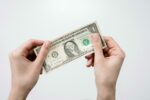
Cloud computing and platform virtualization company VMware launched the public beta of its VMware Kubernetes Engine today, the latest addition to its VMware Cloud Services line of SaaS offerings. The enterprise-grade Kubernetes-as-a-Service beta runs on AWS, with Azure support coming soon, the company says.
William Shelton, VP of product management at VMware wrote in the announcement that the major growth in popularity of Kubernetes over the last 18 months and the desire to support some of the company’s smaller customers’ adoption of Kubernetes container management led to the development of the new service.
“Some customers we talked to have the scale or strategic need to build a dedicated Kubernetes team to assure the full value of the platform is available to their applications,” Shelton wrote. “However, we have talked to many customers who see Kubernetes as a candidate to consume as a service where they get all the value of the growing ecosystem while maintaining focus on developing their applications. It is this desire by customers to get the full benefit of Kubernetes while not having to take on operational burden and build a highly specialized team that serves as our ‘north star’ for making VKE Simple and Easy to Use.”
Shelton says this inspired VMware’s decision-making while developing the backbone to support a Kubernetes service.
“We have created an abstraction we call VMware Smart Cluster,” Shelton wrote. “The Smart Cluster is a collection of policies that capture the desired state of a fully compliant Kubernetes cluster. The Smart Cluster implementation takes the policies and continuously evaluates the security, health, and size of the Kubernetes clusters and remediates any deviations. Building on the Smart Cluster, we have created a set of strongly typed Smart Clusters to choose from. VKE currently has two Smart Cluster types, Developer and Production, that factor the more than for Kubernetes and AWS into a simple choice, given your service-level objectives. The various decisions regarding master nodes, etcd, and worker node composition, network and storage configuration are managed by VKE given your service-level objectives.”
While Shelton says that it’s “just a start” for determining the list of possible policy intents, he says that VMware is hoping that user feedback will fill in any gaps. The decision for a fully-abstracted environment like this, with both the control plane and the worker nodes rolled in, is aimed at “turning the entire Kubernetes cluster into a policy defined, dial-tone service.”
VMware calls VKE “multi-cloud ready” with its compatibility across environments, but even then, Shelton says there are many facets to what VMware hopes to accomplish.
“Kubernetes, as impressive as it is in scope, it is just one element in building modern cloud native applications,” Shelton wrote. “The other elements include data services, developer tool chain services, analytic services, and infrastructure services such as storage and networking just to name a few. In the public cloud, many of these services are provided by the cloud platform itself. AWS is most frequently used today, but Azure and Google Cloud Platform are increasingly so over time. Integrations with AWS, Azure and potentially other cloud platforms are key, so that every bit of the differentiated value of those underlying clouds flows through to our customers. For us, multi-cloud done right is a great Kubernetes experience on AWS AND a great Kubernetes experience on Azure AND so on. Multi-cloud is not just a least common denominator decorator across public clouds with “lip service” integrations.”







